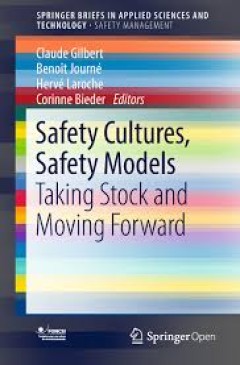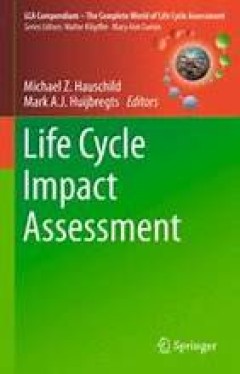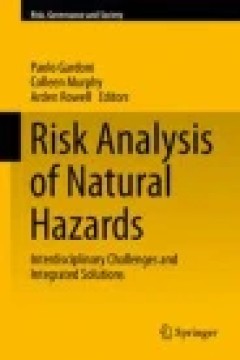Filter by

Model Tests and Numerical Simulations of Liquefaction and Lateral Spreading =…
This open access book presents work collected through the Liquefaction Experiments and Analysis Projects (LEAP) in 2017. It addresses the repeatability, variability, and sensitivity of lateral spreading observed in twenty-four centrifuge model tests on mildly sloping liquefiable sand. The centrifuge tests were conducted at nine different centrifuge facilities around the world. For the first …
- Edition
- 1
- ISBN/ISSN
- 9783030228187
- Collation
- XXI, 660 ill; lamp
- Series Title
- -
- Call Number
- -

Contracting and Safety :Exploring Outsourcing Practices in High-Hazard Indust…
This open access book examines the increase in outsourcing, contracting and subcontracting as ways of organising work. It explores the impact of these employment arrangements on public safety, particularly when they are linked to complex supply networks in a range of engineering industries including oil and gas, nuclear power and aviation. The brief provides practical recommendations on how …
- Edition
- -
- ISBN/ISSN
- 978-3-030-89792-5
- Collation
- X, 116
- Series Title
- -
- Call Number
- 658 CON

Risk Communication for the Future : Towards Smart Risk Governance and Safety …
The conventional approach to risk communication, based on a centralized and controlled model, has led to blatant failures in the management of recent safety related events. In parallel, several cases have proved that actors not thought of as risk governance or safety management contributors may play a positive role regarding safety. Building on these two observations and bridging the gap betwee…
- Edition
- -
- ISBN/ISSN
- 978-3-319-74098-0
- Collation
- VIII, 175
- Series Title
- SpringerBriefs in Applied Sciences and Technology (BRIEFSAPPLSCIENCES)
- Call Number
- 350 RIS

Beyond Safety Training : Embedding Safety in Professional Skills
This book is open access under a CC BY 4.0 license. This book investigates why, despite more and more resources devoted to safety training, expectations are not entirely met, particularly in the industrial sectors that have already achieved a high safety level. It not only reflects the most precious viewpoints of experts from different disciplines, different countries, with experiences in va…
- Edition
- -
- ISBN/ISSN
- 978-3-319-65527-7
- Collation
- XII, 159
- Series Title
- SpringerBriefs in Applied Sciences and Technology (BRIEFSAPPLSCIENCES)
- Call Number
- 658 BEY

The Illusion of Risk Control : What Does it Take to Live With Uncertainty?
This book is open access under a CC BY 4.0 license. This book explores the implications of acknowledging uncertainty and black swans for regulation of high-hazard technologies, for stakeholder acceptability of potentially hazardous activities and for risk governance. The conventional approach to risk assessment, which combines the likelihood of an event and the severity of its consequences, …
- Edition
- -
- ISBN/ISSN
- 978-3-319-32939-0
- Collation
- V, 112
- Series Title
- SpringerBriefs in Applied Sciences and Technology (BRIEFSAPPLSCIENCES)
- Call Number
- 658 ILL

Exploring Resilience : A Scientific Journey from Practice to Theory
- Edition
- -
- ISBN/ISSN
- 978-3-030-03189-3
- Collation
- VI, 128
- Series Title
- -
- Call Number
- -
- Edition
- -
- ISBN/ISSN
- 978-3-030-03189-3
- Collation
- VI, 128
- Series Title
- -
- Call Number
- -

Safety Cultures, Safety Models : Taking Stock and Moving Forward
- Edition
- -
- ISBN/ISSN
- 978-3-319-95129-4
- Collation
- VIII, 166
- Series Title
- -
- Call Number
- -
- Edition
- -
- ISBN/ISSN
- 978-3-319-95129-4
- Collation
- VIII, 166
- Series Title
- -
- Call Number
- -

Life Cycle Impact Assessment
This book offers a detailed presentation of the principles and practice of life cycle impact assessment. As a volume of the LCA compendium, the book is structured according to the LCIA framework developed by the International Organisation for Standardisation (ISO)passing through the phases of definition or selection of impact categories, category indicators and characterisation models (Classifi…
- Edition
- 1
- ISBN/ISSN
- 978-94-017-9744-3
- Collation
- Air Industri
- Series Title
- -
- Call Number
- 551.23

Risk Assessments and Safe Machinery
This book describes the prerequisites for the placing on the market and the safe use of machinery in compliance with the relevant EU Directives, especially the Machinery Directive 2006/42. It provides readers with high-level knowledge concerning the Essential Health and Safety Requirements (EHSR) that machinery must fulfill. The approach and principles of the Machinery Directive were most recen…
- Edition
- -
- ISBN/ISSN
- 978-3-319-31361-0
- Collation
- -
- Series Title
- -
- Call Number
- -

Risk Analysis of Natural Hazards
This volume investigates the interdisciplinary and cross-cutting challenges in the risk analysis of natural hazards. It brings together leading minds in engineering, science, philosophy, law, and the social sciences. Parts I and II of this volume explore risk assessment, first by providing an overview of the interdisciplinary interactions involved in the assessment of natural hazards, and then …
- Edition
- -
- ISBN/ISSN
- 978-3-319-22126-7
- Collation
- -
- Series Title
- -
- Call Number
- -
 Computer Science, Information & General Works
Computer Science, Information & General Works  Philosophy & Psychology
Philosophy & Psychology  Religion
Religion  Social Sciences
Social Sciences  Language
Language  Pure Science
Pure Science  Applied Sciences
Applied Sciences  Art & Recreation
Art & Recreation  Literature
Literature  History & Geography
History & Geography